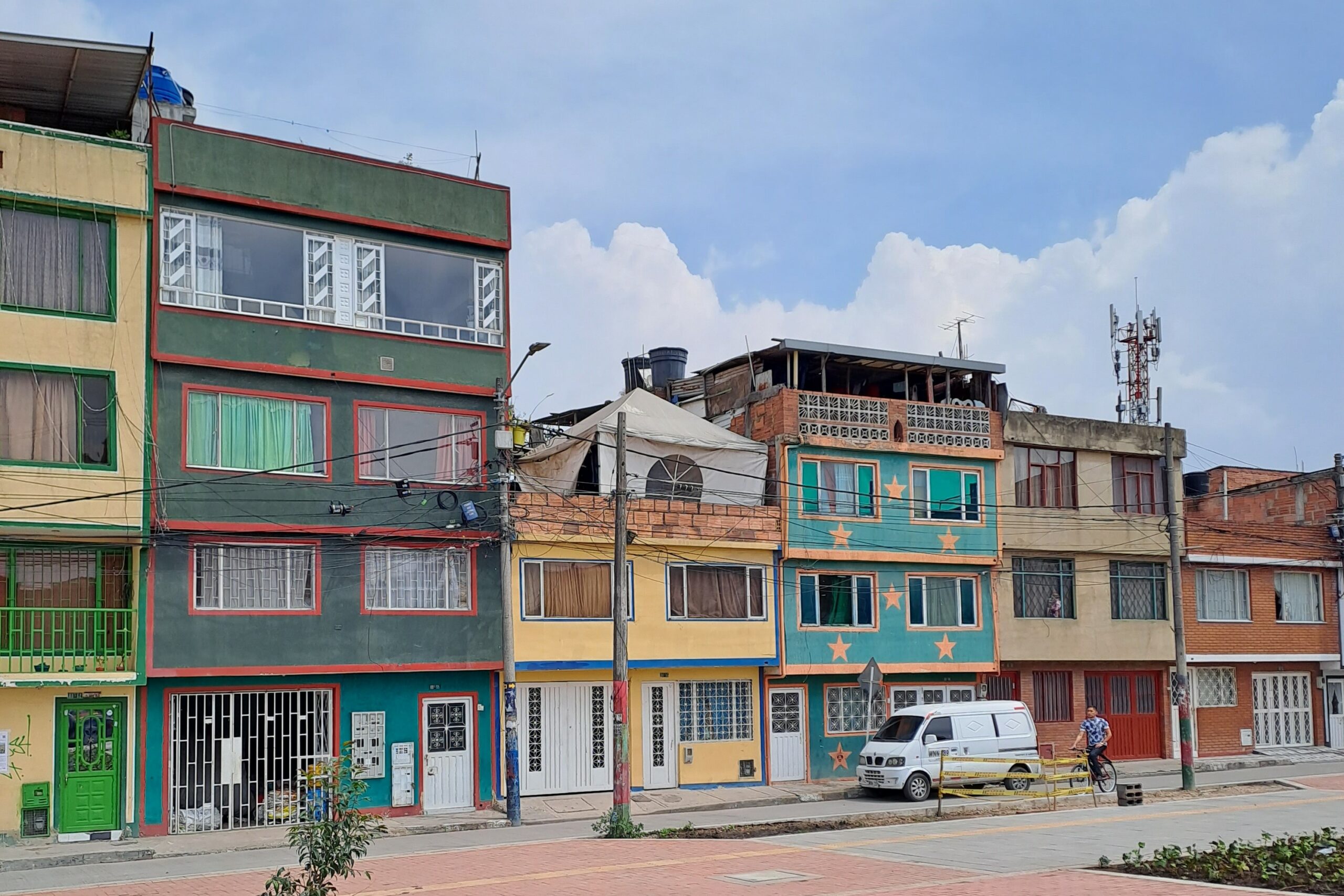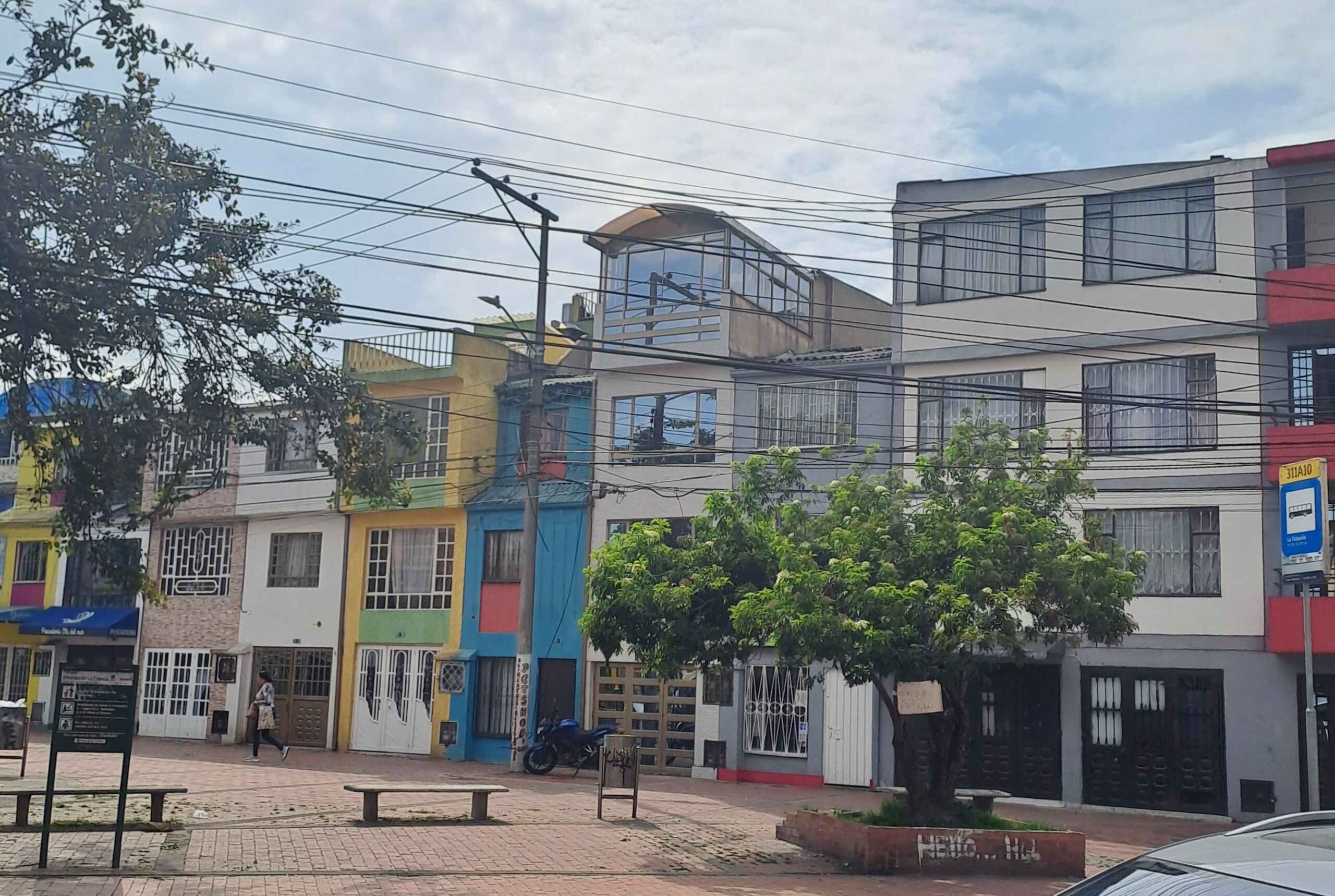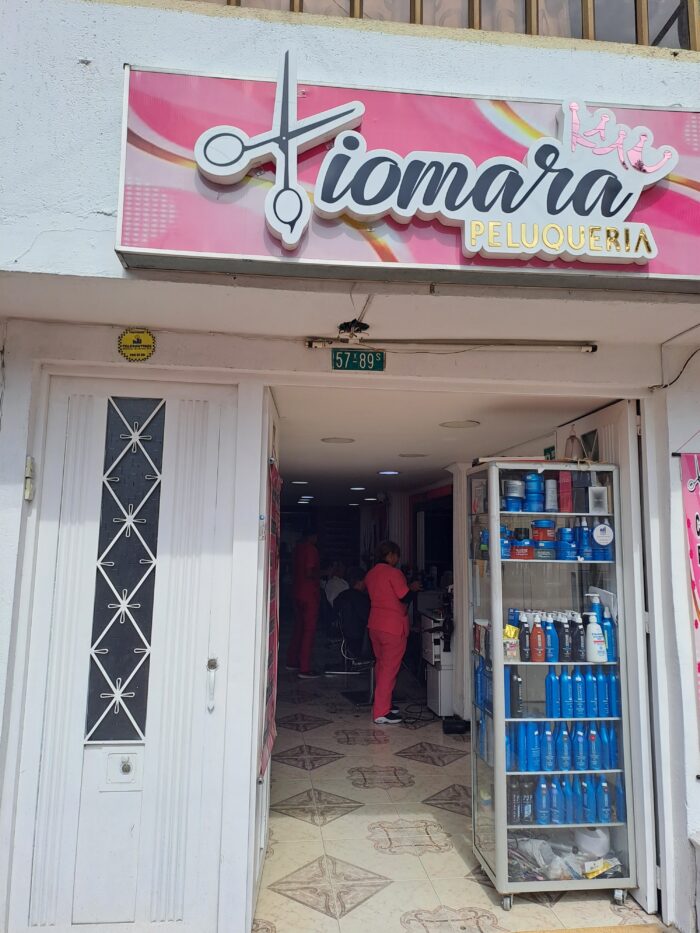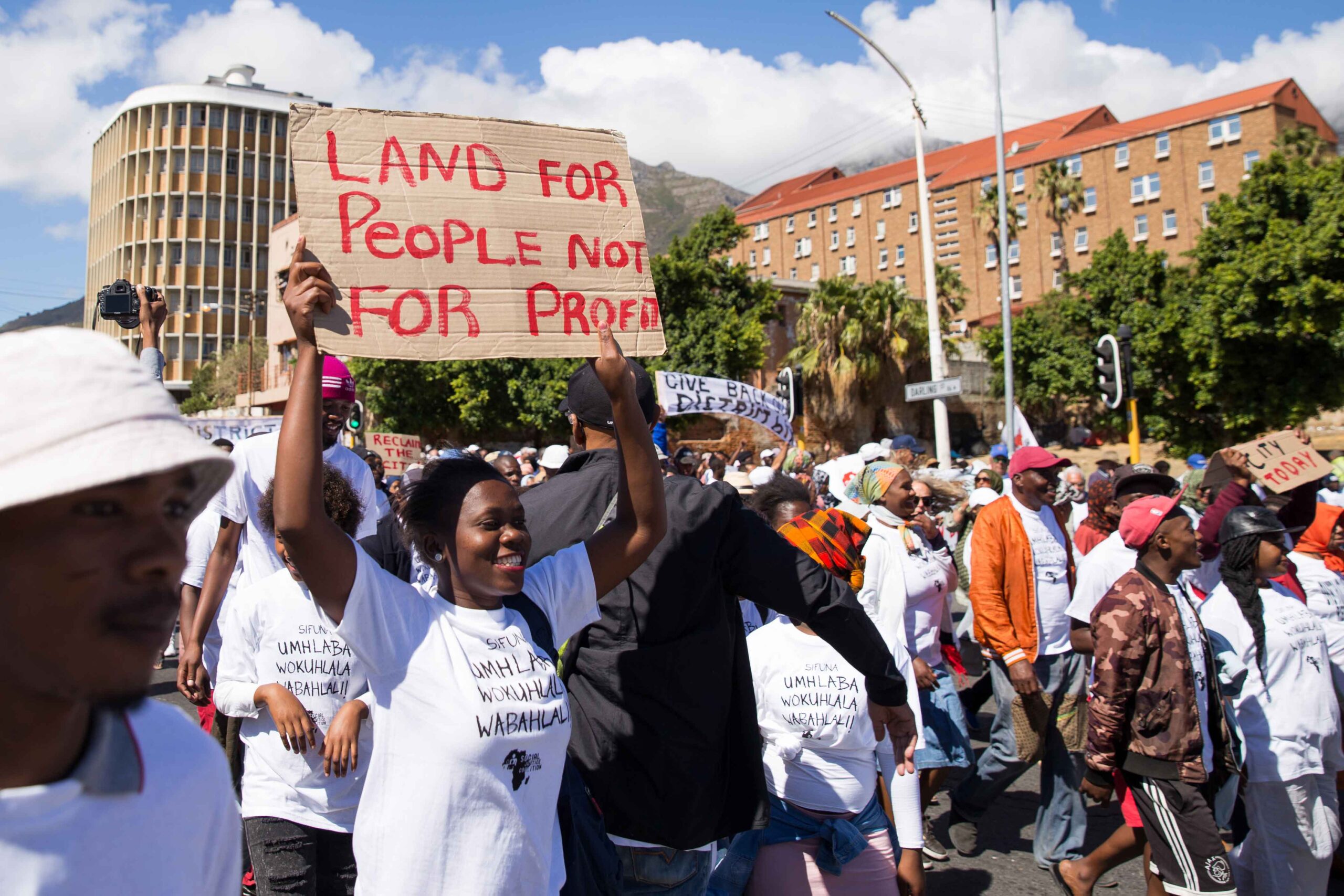
Informal occupation of land and buildings is growing in cities around the world. Reflecting on insights from a research trip to Bogotá, Colombia, Hayley Abrahams, Dr Andreas Scheba, Dr Suraya Scheba, John Giraldo Diaz and Diana Sanchez-Betancourt argue that, with the right governance approach and support, such occupied land and property can be turned into sustainable and thriving neighbourhoods.
Around the world, a growing number of people struggle to access affordable housing. In response, people are occupying land and buildings to create homes and obtain access to cities. As part of an ongoing comparative research project called City Occupied, we travelled to São Paulo, Brazil, and Bogotá, Colombia, in early January 2023 to visit areas that have been occupied.
We also met academic counterparts and civil society stakeholders, and conducted workshops to deepen our analysis of the challenges and opportunities of informally occupied places.
Through these encounters, we learnt a great deal about different types of property occupation, the diverse actors and modus operandi, and the potential they hold for creating more inclusive cities. Among the most inspiring moments of the trip were visits to Bogotá neighbourhoods that had turned from informal settlements to consolidated and thriving places in less than two decades. We argue that incremental practices, accompanied by state support for building mixed-use, higher-density homes, are critical to this transformation.
Informal densification in Bogotá
Today, sections in the south of Bogotá are growing rapidly to meet the demands of an expanding population. Bogotá is one of the densest cities in the world, which is partly due to its geographical features. Mountains create a natural border to the east, and some land is classified as facing high environmental risk and not suitable for habitation. Land and building occupations have contributed to much of the growth and urban form of the city. In particular, the informal densification and improvement processes that are turning occupied spaces into livable, sustainable, mixed-use neighbourhoods are of great significance.

Across the city, bottom-up, informal vertical growth is providing large amounts of housing for the growing population. A visit to Altos de la Estancia, a neighbourhood within Ciudad Bolivar in the south of the city, helped us to better understand this phenomenon. Access to land in the area has been historically linked to socio-economic processes such as illegal mining and industries where the South Highway is located. In the 2000s, the area was rezoned for residential use, providing access to work opportunities, a transport corridor and land.
Multi-storey homes in Bogotá, Colombia Photo: Hayley Abrahams, HSRC
Some early migrants were initially provided housing under state programmes, beginning with two-storey starter homes (66.66m²) that included basic service provision. These homes were designed to support incremental development, extending to multi-use spaces over time to serve both residential and commercial purposes. Having a small shop or business on the ground floor, for example, was planned for and recognised as an essential livelihood strategy.
Alongside the provision of housing under state programmes, neighbouring residents of Altos de la Estancia occupied land informally, purchasing plots individually from so-called “pirate” property developers. In both instances, however, residents soon started to build vertically, creating an additional floor for rental, with planning regulations allowing for vertical expansions, albeit limited to four levels. This expansion is incremental, mainly through progressive self-construction over years or decades.
Homeowners primarily finance this process with savings, often generated through income in the informal sector, which employs more than half of the population in the city. The average rent for a two-bedroom apartment is 500,000 pesos (R1,800) per month, with access to utilities dependent on negotiation between the landlord and the tenant. Figure 1 shows the original provision and the progressive development that took place.
Figure 1. Original provision and progressive development (Silva 2016)

Source: http://web.mit.edu/incrementalhousing/articlesPhotographs/pdfs/CiudadB.pdf
While the “pirate” developers initially provided basic services in these settlements, such as informal electricity connections, unauthorised connections to sewage and water networks, residents engaged in collective organising strategies to ultimately demand infrastructure services from the state. In observing the consolidation of neigbourhoods in Altos de la Estancia, we came to understand that this was achieved through community organisation, political pressure and protest action. Through these strategies, communities succeeded in claiming support from the local government, which invested in roads, bulk infrastructure and social and economic facilities in the areas.
Importantly, while regularisation resulted in public infrastructure investments, it also contributed to the municipal budget through the collection of taxes and rates from residents. In effect, the state recognition of, and investment in, the neighbourhood contributed to establishing a new social contract between residents and the state. In return, this allowed the state to continue to invest in the maintenance of social and public infrastructures like parks, local artwork (for example, graffiti), public libraries, sports and recreation. This socio-cultural infrastructure contributed to the wellbeing of residents, making these areas lively and viable communities.

The benefits to households: livelihood opportunities
The vertical extension and densification of the existing housing created commercial opportunities for the residents, including informal rental and businesses. In Bogotá, this presented significant potential for making a livelihood, especially for the women in these communities who frequently and informally extended or subdivided existing property. The extensions have also made room for overlapping activities and allowed residents to make efficient use of space. For those households, home-based businesses were crucial to survival, and their neighbourhoods were important to their businesses.
In the Bogotá houses, the ground floor was usually used for businesses, while the rest of the home was used for living space and the upper terrace for home gardens.
Business on the ground floor, and living space on levels 1 and 2.
Photos: Hayley Abrahams, HSRC
Some of the activities the researchers came across included hairdressing, car repairs and running convenience stores.
In addition to these services, food was also sold in the homes and around the housing area. Although the neighbourhoods may have a noticeable commercial appearance along the main roads and may include a combination of retail and other uses, they are still predominately residential. The local economy is expanding as more businesses join in to complement one another’s services, resulting in a variety of essential services.

Conclusion: Property occupations in South Africa
Based on our reflections from Bogotá, we believe that many informal settlements in South Africa can be turned into thriving neighbourhoods. With the right governance approach and political support, informal dwellings can be turned into medium-density, mixed-use developments, which promote liveable neighbourhoods with access to economic opportunities. It is also important for government to invest in public infrastructure and social amenities such as parks and libraries to cater for the increased densities and create a liveable environment.
By promoting vertical densification and mixed-use developments in our informal settlements and townships, we make better use of public resources of urban land and infrastructure. Additionally, vertical growth reduces displacements and contributes to creating more affordable accommodation.
We appreciate that informal densification is already happening in South African cities. This is driven by the enormous growth in backyard rental housing, most of which are low-quality structures without adequate access to basic services. There are exceptions in areas like Delft or DuNoon in Cape Town, where homeowners and micro-developers are increasingly investing in higher-quality rental flats. While this trend offers significant potential to improve living conditions in peripheral neighbourhoods, our experience in Bogotá highlights the importance of enabling and supporting residents in building mixed-use homes.
We argue that policymakers should better support “smart vertical density”, which means enabling residents to extend their homes vertically, over time, and to use dwellings for both residential and commercial purposes. The example in Bogotá demonstrates how, under the right conditions, informal occupations can turn into liveable places that are full of social and economic life.
Authors:
Hayley Abrahams, a Department of Science and Innovation master’s intern; and Dr Andreas Scheba, a senior researcher in HSRC’s Equitable Education and Economies division; Dr Suraya Scheba, a lecturer in the Environmental and Geographical Science Department, University of Cape Town; Diana Carolina Sanchez, a senior researcher in the HSRC’s Developmental, Capable and Ethical State division; and anthropologist John Giraldo Diaz, Bogotá fieldwork coordinator and a member of the local task team at Altos de la Estancia.


